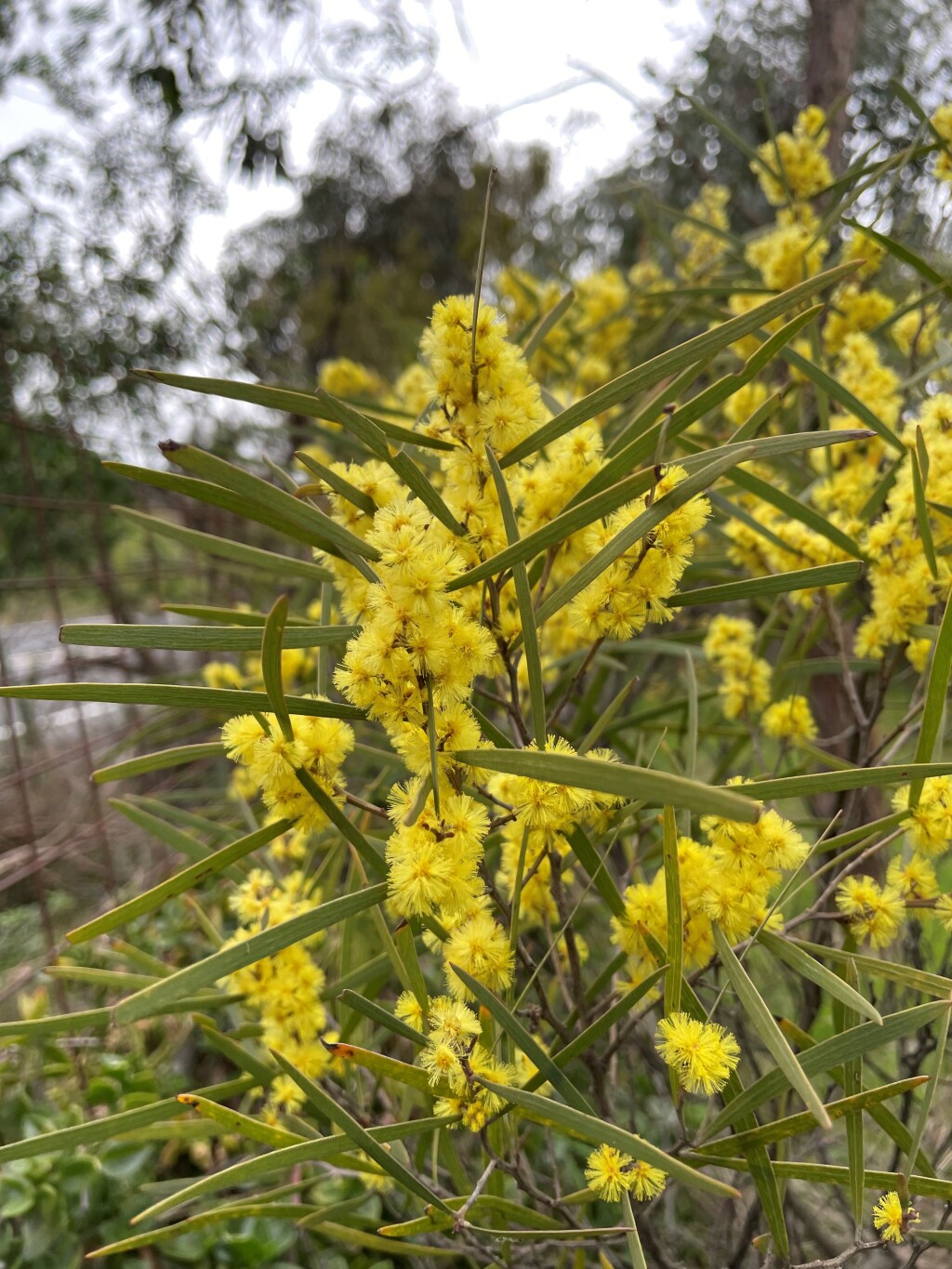Acacia dawsonii
R.T.Baker Poverty WattleShrub or tree, 0.4–4 m high; branchlets terete with resinous, sometimes minutely crenate, ridges, densely covered with appressed, minute hairs between ridges. Phyllodes ascending to erect, linear, mostly 5–11 cm long, 3–8 mm wide, straight to slightly curved, thin, glabrous, often with resinous veins, tapering to obtuse, rarely acute, callose-mucronulate; main veins 1 or 2, raised, distant, with few to numerous, sometimes raised, secondary veins occasionally to frequently anastamosing. Racemes 4–6-headed, rachis 5–25 mm long, resin-ridged, with appressed, minute hairs; peduncles 1–3 mm long; heads depressed-globular, 3–4 mm diam., mostly 4–6-flowered, light golden, subtended by 4–6 thick, semicircular bracteoles, those in heads spathulate. Flowers 5-merous; sepals united at base. Pods linear, to 6 cm long, 2–5 mm wide, straight or slightly curved, thinly coriaceous, smooth, glabrous; seeds longitudinal, oblong, black, aril apical. Flowers Sep.–Oct.
NIS, EGL, EGU, HNF. Also Qld, NSW. In Victoria, known from only a few disjunct localities in the east (Mitta Mitta and Snowy River valleys), growing in dry open-forest, usually in rocky sites.
Related to A. farinosa which has thick, linear-oblanceolate phyllodes with the veins immersed, more flowers in the heads, and a ring of sterile, differently shaped bracteoles at the apex of the peduncles.
Entwisle, T.J.; Maslin, B.R.; Cowan, R.S.; Court, A.B. (1996). Mimosaceae. In: Walsh, N.G.; Entwisle, T.J., Flora of Victoria Vol. 3, Dicotyledons Winteraceae to Myrtaceae, pp. 585–658. Inkata Press, Melbourne.
 Spinning
Spinning

